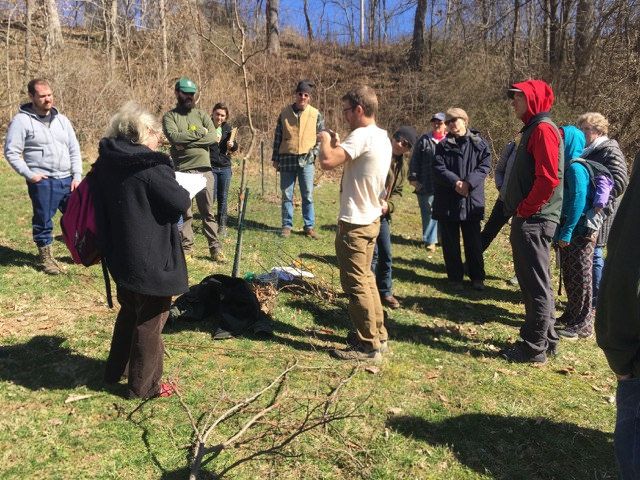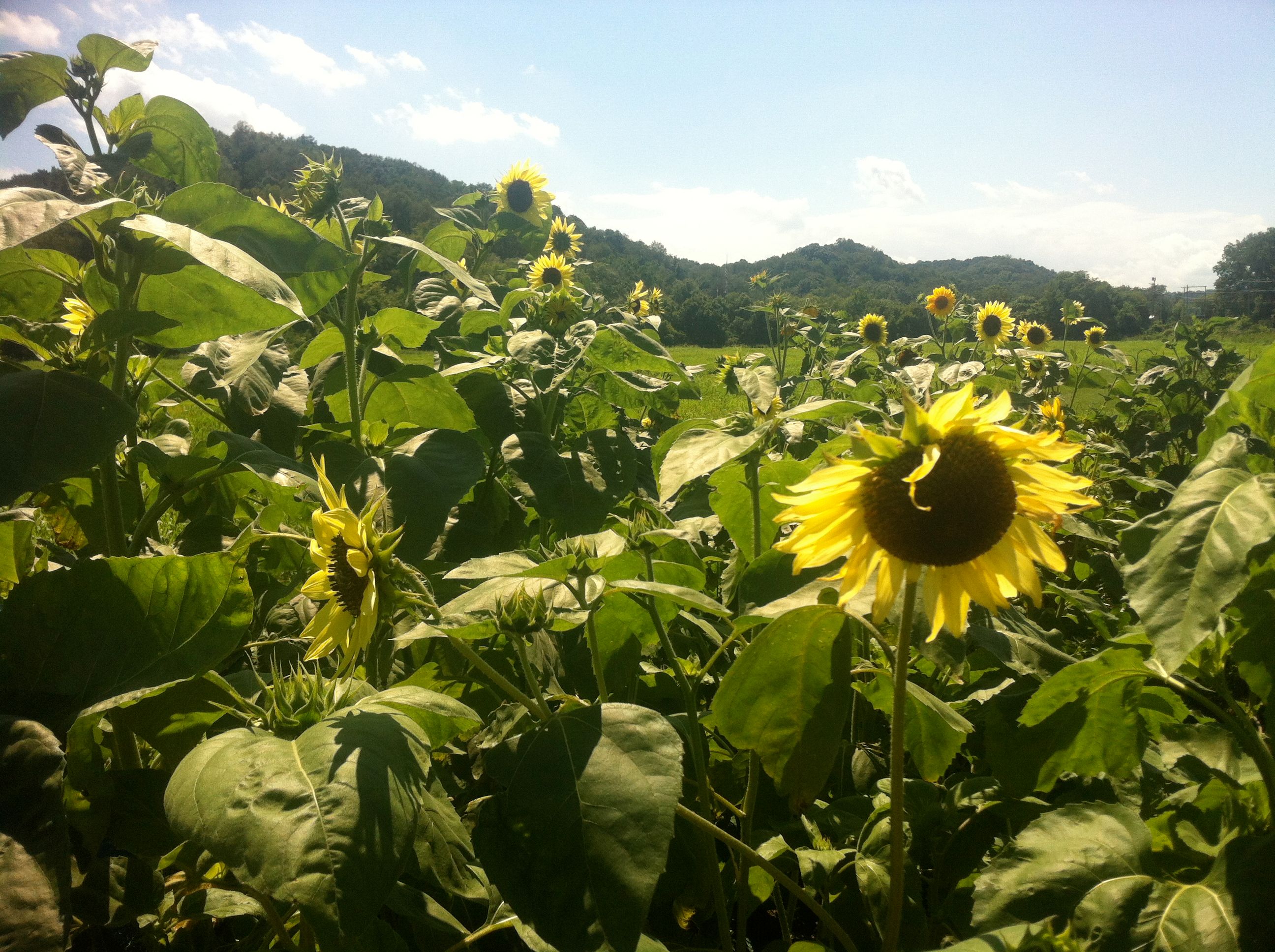
Tree Pruning Workshop
On Sunday, March 4th 2018 Athenians flocked to Highland park to get the 101 on Fruit Tree Pruning. The workshop was led by Weston Lombard, owner of Solid Ground Farm. Lombard taught the basics of tree pruning from why to prune, when to prune, how to prune and what to prune.
Lombard explains tree pruning encourages airflow and limits disease. Other reasons include an increase in production and that pruning maximizes sun penetration. Pruning is essential because it gives trees a strong foundation for fruit growing. Lombard prefers to prune after leaf fall but before trees begin to flower. He advises to not prune in subzero temperatures and to prune when it is dry out. Pruning before rainfall or high humidity can prevent fungal infections. Lombard says you can prune in the summer but there is more moisture which leaves a higher chance for infection. The advantage of pruning in the winter is that there’s no leaves so it is easier to identify where to prune.
Before pruning, Lombard encourages to look for anything on the tree branches that look dead or diseased, an example of this is black holes on branches. You will want to sterilize (10 parts water to 1 parts bleach) your pruning cutter before removing branches. Lombard explains to test if a branch is dead or not you will want to scratch the branch and see if it’s green, green indicates your branch is alive. So remember, if it’s green, you’re all clean!
You will want to cut out everything diseased on the tree first. As a general pruning rule of thumb, you only want to take out a third of the canopy. When dealing with one-year-old trees you will want to remove low branches since branches stay at the same height, this will help with the overall air flow of the tree. Examining the bark and bud of a tree will provide indications for the kind of tree you are pruning.
The branches of the trees should grow out at a 45-degree angle. The goal of pruning is to cut the tree into a nice scaffold of branches. Ideally, scaffold sets should be separated by 3-4 feet. When moving on to the next scaffold set of your tree, usually the tallest branch is your scaffold leader. For your scaffold, you want dispersed branches growing off laterally. If your tree does not have any lateral branches you can do a heading cut. A heading cut will encourage lateral branches to grow from the tree. Another technique to get branches to grow from a nice 45-degree angle is to tie desired branches to a cinder block to get it to where you want it to go. After a year of the branch being tied it’ll stay in the lateral position. You want to loop the string in order to allow the tree to keep growing.
When pruning fruit trees, be sure to cut at an angle and to cut above buds in order to stimulate the buds to grow and become scaffold brunches. If you cut a branch that is two inches or more in diameter it is an entry point for rot and disease. The tree will compartmentalize and grow over it. If the diameter of your branch is under two inches, then it will be able to heal from disease. Lombard claims to cut off any branches that are growing vertical because you want branches to grow out horizontally for balanced fruit growth. As someone whose knowledge of pruning referred to the way your fingers looked after a long pool day, the tree pruning workshop taught me the true science behind fruit tree upkeep.

